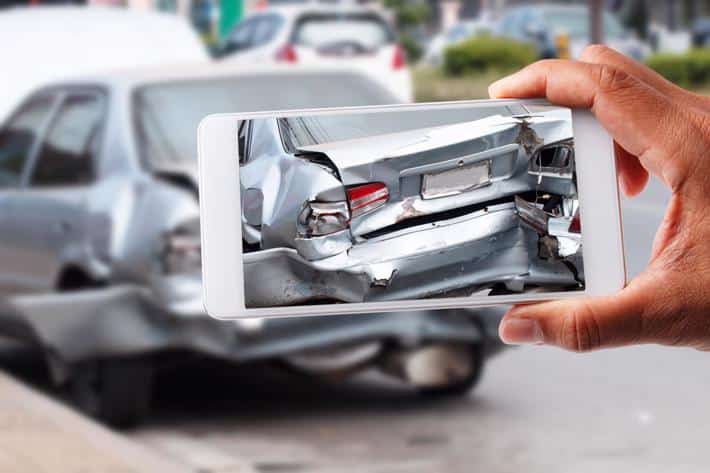Imagine stepping into an emergency room, trusting your life in the hands of those clad in scrubs. Now, think about what happens when that trust is shattered by emergency room negligence. It’s a reality far too many face—a moment where time stands still but the consequences can last a lifetime.
Mistakes happen more frequently than we’d like to admit. From misdiagnosed heart attacks to medication errors, the stories are as varied as they are heartbreaking. Every second counts in these halls buzzing with urgency; yet sometimes, it’s not just about saving lives but also about making split-second decisions that don’t end up costing them.
Errors and oversights lead down a path no one wants to walk—legal battles ensue, families struggle for compensation and justice while grappling with loss or injury. Negligence’s shadow extends far, imprinting invisible yet profound scars on the lives it disrupts.
Table Of Contents:
- Understanding Medical Malpractice in Emergency Rooms
- When Does an ER Error Qualify as Medical Malpractice?
- Legal Process for Filing a Medical Malpractice Lawsuit
- Identifying Liability in Emergency Room Errors
- Common Emergency Room Errors in Baltimore, Maryland
- Choosing the Right Attorney for Your ER Malpractice Case
- FAQs in Relation to Emergency Room Negligence
- Conclusion
Understanding Medical Malpractice in Emergency Rooms
Defining Medical Malpractice
Let’s get this straight. Emergency room negligence or malpractice occurs when ER doctors make significant errors, causing harm to patients. Despite their efforts to provide top-notch care, mistakes can slip through the cracks more often than we’d like.
Common Mistakes Made by ER Doctors
The emergency room is akin to a beehive – buzzing and chaotic. Amidst this frenzy, errors are bound to happen. Consider scenarios such as an overly rushed blood work analysis or a missed chest pain that indicates a ‘heart attack.’ It’s these slip-ups in high-pressure situations that can lead to serious consequences for patients when errors are made by emergency room doctors and emergency room staff. Those mistakes may be emergency room malpractice.
When Does an ER Error Qualify as Medical Malpractice?
The Role of Medical Negligence
Negligence in medicine isn’t just a mistake. It’s essentially about not meeting the care standards that you’re rightfully entitled to. For instance, something as simple as not sterilizing equipment properly could lead to avoidable infections.
Demonstrating Significant Injury or Harm
To win a medical malpractice case, you must prove several things: First, your doctor made a decision that deviated significantly from what any sensible ER doctor would do. Second, this error resulted in more harm than when you first walked into the ER—this could include pain, medical bills, and potentially even lost wages.
Legal Process for Filing a Medical Malpractice Lawsuit
Engaging a Medical Malpractice Law Firm
Facing medical malpractice is tough, but you’re not alone. The first step? Get in touch with a law firm that’s best in handling medical malpractice cases. They’ve seen it all – from hospital ER blunders to heartbreaking wrongful death claims.
Scheduling a Free Case Evaluation
Next up, let’s talk details. A free case evaluation is your chance to spill the beans. Every mistake, every detail about your emergency room visit gone wrong – they need to hear it. It’s here where the path towards compensation starts getting clearer.
Identifying Liability in Emergency Room Errors
Understanding Hospital Liability
Hospital errors? Yeah, they happen. But who’s on the hook when things go south in the ER? So, what’s the deal with hospitals being held responsible when things don’t go as planned? If an ER doc or nurse drops the ball while clocked in, the hospital might have to answer for it.
This is all thanks to a fancy term: respondeat superior. It means if staff mess up doing their job, the hospital could be liable. But here’s where it gets tricky—this doesn’t always stick if your doctor was more of a lone wolf (aka an independent contractor).
Roles of First Responders and Good Samaritans
First Responders and Good Samaritans are like those unsung heroes you see in comic books—always ready to help. In emergencies, their role is clear: provide immediate care.
Common Emergency Room Errors in Baltimore, Maryland
Diagnostic Errors
Baltimore’s ERs are bustling. But amidst the chaos, diagnostic errors happen more often than we’d like to admit. Missed or delayed diagnoses can lead to a world of hurt.
Long Waiting Times
Packed waiting rooms and ticking clocks. In emergency care, time is everything but sometimes it feels like there’s never enough of it.
Medication Mistakes
We trust them with our lives yet sometimes even the best make mistakes. Wrong meds? Wrong dose? It happens and it’s scary.
Failure to Order Necessary Tests
At times, the unknown can indeed pose a real threat. Skipping essential tests might mean missing crucial clues about your health.
Choosing the Right Attorney for Your ER Malpractice Case
Finding the right attorney feels like searching for a needle in a haystack, doesn’t it? But when it comes to ER malpractice, you need someone who’s not just any attorney. In your quest, you seek a champion clad in legal armor, ready to battle ER malpractice dragons.
Here’s your quick guide:
- Experience is Key: Look for an attorney whose bread and butter is medical malpractice, specifically in emergency rooms.
- Credibility Counts: Dig into their track record. Success stories in similar cases? That’s what we’re talking about.
- Laser Focus on Location: Maryland, laws vary by state; local expertise can make all the difference.
Pick wisely because they’re your champion in navigating these turbulent waters.
FAQs in Relation to Emergency Room Negligence
What is the most common ER lawsuit?
Misdiagnosis tops the list, leading to wrong treatment or missed conditions that could have serious consequences.
What is an example of a breach of the duty of care in a medical negligence lawsuit?
A doctor ignoring patient complaints and failing to order tests, resulting in undiagnosed conditions, showcases this breach.
Which of the following is an example of medical negligence?
An operation on the wrong body part because someone didn’t double-check. It’s avoidable and clearly negligent.
Is misdiagnosis medical malpractice?
If it causes harm due to a reasonable standard not being met by healthcare providers, then yes, it’s malpractice.
Conclusion
So, we’ve ventured through the murky waters of emergency room negligence together. It’s a journey none wish to take but one that holds lessons more valuable than gold.
We started with trust—a simple expectation that in our most vulnerable moments, we’d be cared for, not harmed. Yet, as tales from the ER reveal, mistakes happen. Misdiagnoses and medication errors are just the tip of an iceberg floating in a sea of urgency.
The aftermath? A battle for justice and compensation amidst loss or injury—a struggle leaving unseen scars on victims’ lives. But here’s where it gets real; understanding your rights is like holding a beacon in this stormy sea.
Fighting back against emergency room negligence isn’t just about seeking recompense—it’s about making sure what happened to you doesn’t happen to someone else. Transforming agony into a mission goes beyond personal healing—it’s a call to prevent future harm.
This isn’t some dystopian narrative spun by Hollywood; it’s real life with stakes higher than any movie plot could conjure up. And while robots aren’t taking over anytime soon, unchecked medical errors threaten more lives every day—unless we act.
In shining light on these shadows, remember: knowledge empowers action which then fosters change—the kind saving lives before they ever need saving within those bustling ER walls again.





